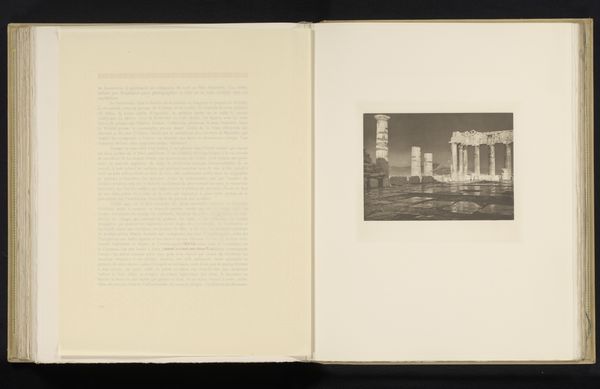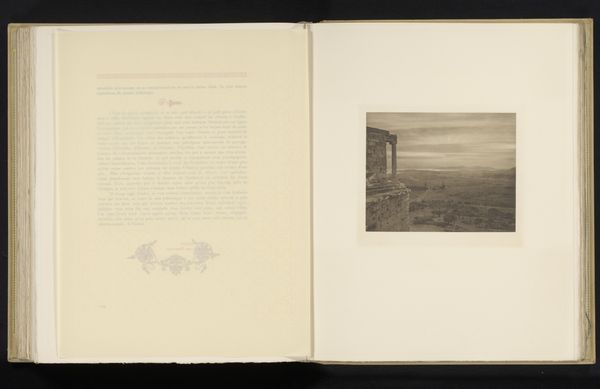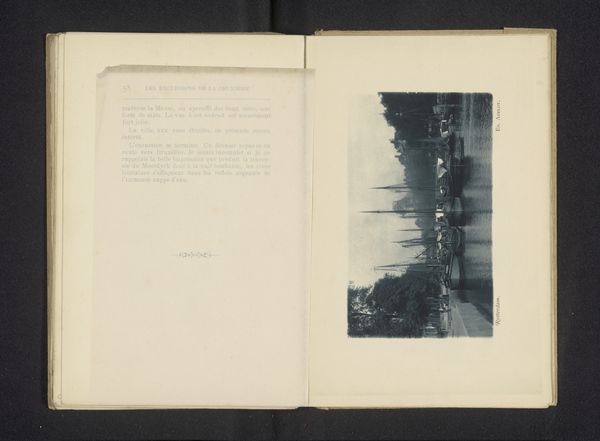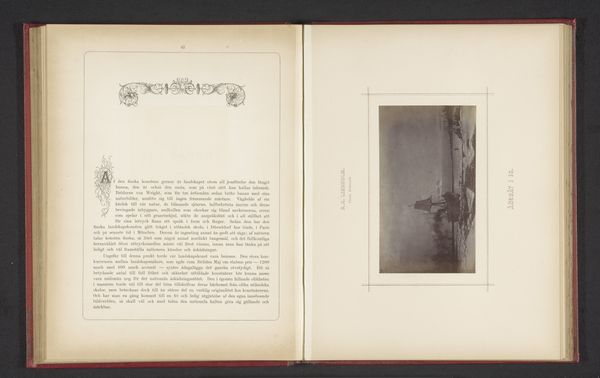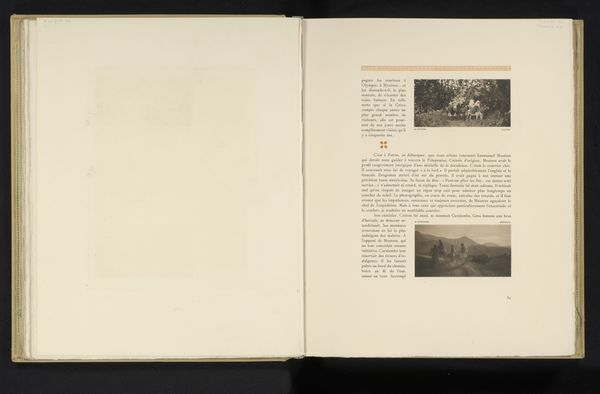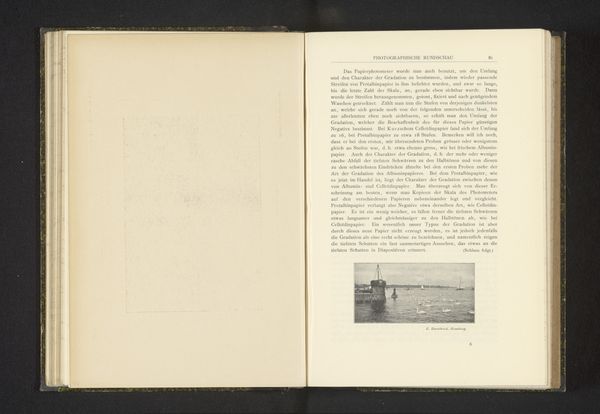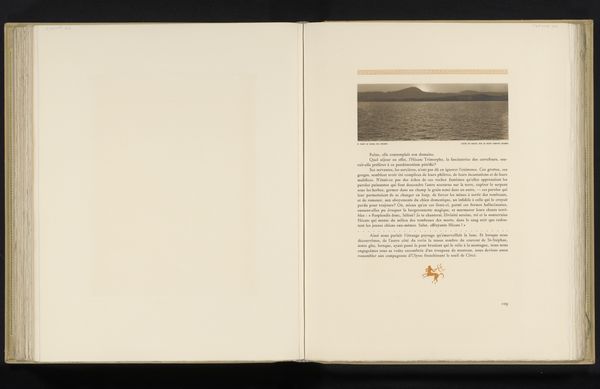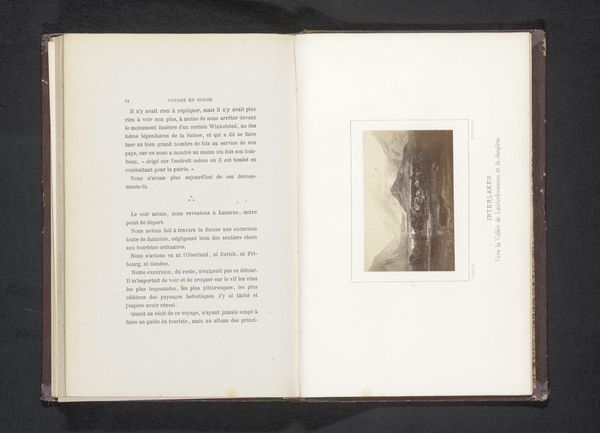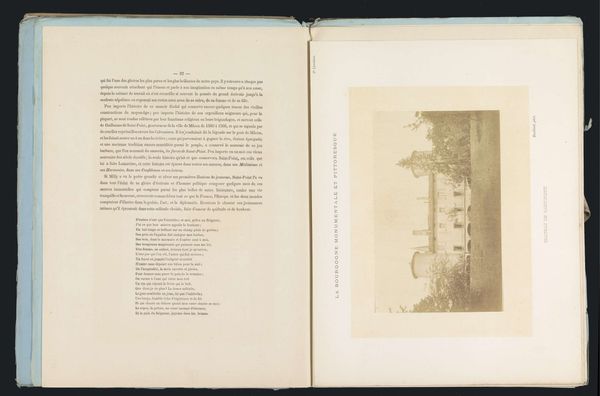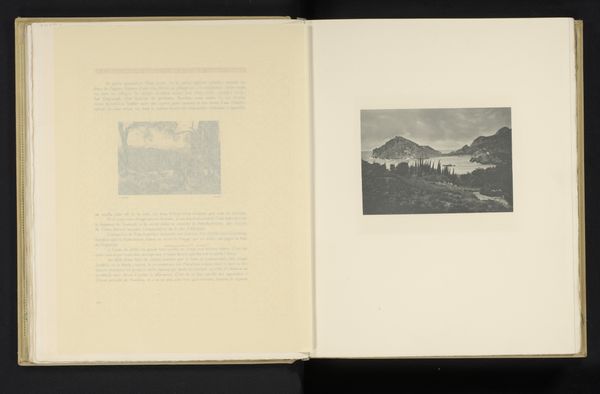
print, paper, photography, site-specific
#
aged paper
#
paperlike
# print
#
greek-and-roman-art
#
landscape
#
paper
#
photography
#
site-specific
#
thick font
#
publication mockup
#
delicate typography
#
paper medium
#
thin font
#
historical font
#
publication design
#
small font
Dimensions: height 168 mm, width 227 mm
Copyright: Rijks Museum: Open Domain
Editor: Here we see Frédéric Boissonnas’s print, “Tempel van Poseidon op Kaap Soenion,” made before 1910. It’s an image of a Greek temple, framed as part of a publication, and it looks very…stark. What grabs your attention? Curator: What I find striking is the deliberate juxtaposition. We have the 'high art' subject—an ancient temple—reproduced within the framework of mass production: a book. Consider the labour involved: from quarrying the marble for the temple to the contemporary labour involved in photographic reproduction and printing, bound by the physical bookmaking. Editor: That's a perspective I hadn't considered! How does focusing on materials change our interpretation? Curator: By acknowledging the physical making and mode of distribution, we democratize art. Is the photograph any less significant or the temple itself devalued, because of their placement within mass-produced book? Think about how photography enabled the mass circulation of images, creating new ways to engage with cultural heritage but also transforming those sites into commodities. What do you make of that relationship? Editor: I guess seeing the temple reproduced takes away its aura a little, highlighting the system it becomes a part of once the photograph is distributed on paper. Curator: Exactly. And think about the act of looking: the pilgrimage to the site versus the encounter within a printed page. This small reproduction makes it accessible, turning the ancient temple into a consumer object. It urges us to examine value within an image as part of its production. Editor: This really makes me think differently about not just what we’re seeing, but how. Thank you. Curator: And it reminds us to ask, What purpose did these images fulfill and how have they altered over time as their materials age and become obsolete?
Comments
No comments
Be the first to comment and join the conversation on the ultimate creative platform.
